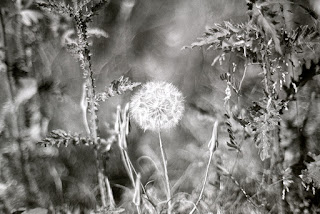This review is about the Porst Color Reflex MC Auto 55mm f/1.2 F lens. This lens was made in Japan for the German Photo Porst chain of camera stores. Two versions of this lens were made, an early version with f/22 as the smallest f-stop and a later version with f/16 as the smallest f-stop.

This lens review is about the later f/16 lens. The two versions look pretty much the same, but apart from the f/22 f-stop there are a few differences. The f/22 closest focal distance is 0.5 meters, with the f/16 this is 0.6 meter. Cosmetically there are a few differences too, For instance, the f/22 version has the lens serial number on the front, whilst the f/16 variant has the serial number on the aperture ring. The f/16 version also has the Pentax style raised alignment dot, something the f/22 version does not have. The upper barrel of both lenses is slightly different too, although they both share the 55mm filter thread. These lenses look very much like contemporary Cosina lenses so they could have been made by Cosina. I however haven't found any confirmation of this. I bought this lens about 5 years ago as sort of a backup for my Pentax 50mm f/1.2 lens. The price of the Porst that time was € 156, pretty cheap for an f/1.2 lens. I paid quite a bit more, € 429, for my Pentax version. As it was intended as a backup lens it never saw much use until recently, when I decided to give this lens some much-needed attention.
Specifications (f/16 model lens):
Focal length: 55mm
Minimal focus distance: 0.6 meters
Aperture: f/1.2- f/16
Aperture blades: 8
Lens elements: 6
Diameter: 55mm
Mount: Pentax K
Built: 1970s-1980s
Use
This is one of the bigger standard lenses in the 50mm - 55mm range. Its focus ring turns to the left towards infinity. This may seem a bit unnatural at first for Pentax users as the Pentax lenses turn to the right. Focusing is smooth and in general, the lens has a nice feel to it. I've used this lens with Pentax film cameras and with digital Canon EOS cameras via an adapter. Due to the design of the K mount these lenses do not fit APS-H and full frame EOS cameras much like the EF-S series of lenses. K mount lenses will only work on EOS cameras with an APS-C sensor (crop factor 1.6).
Images
The images you see below were shot with a Pentax MZ-S loaded with Fomapan Profi Line Classic 100 black and white film and a Canon EOS 90D set at ISO 200.
f/1.2
f/2.8
f/5.6
f/11
As you can see at f/1.2 subject isolation is excellent! Wide open it also shows chromatic aberration (CA) which dissapears when the lens is stopped down. At f/2.8 it is almost gone and at f/5.6 there is no sign of it. The further you stop down, more pieces get in focus until at f/11 all pieces are in full focus. At f/1.2 there is also a bit of vignetting, although the APS-C sensor crops out some of it.
full photo, f/1.2
crop of the center of the first photo
In these shots you can clearly see the paper thin focus area when the lens is wide open. Again wide open it shows CA which is clearly visible at the edges of the coins in the second cropped image. In this shot the vignetting at f/1.2 is quite strong.
There appears to be some very slight barrel distortion, although the chess board itself is a bit crooked in that sense so it might not be the best subject to judge distortion with.
In the field
lens stopped down
Lens stopped down
Lens wide open
Lens wide open
Conclusions
Overall I really like this lens. It produces dreamy images when shot wide open and when stopped down this lens performs excellent with crisp sharp images. Of couse, this is a 1970s-1980s lens so focusing and setting the aperture have to be done manually. Focusing is tricky wide open due to its very narrow depth of field, I find that I prefer using it with classic cameras that have a split-screen focusing screen. The fact that is suffers from vignetting and CA wide open is unfortunate but can be fixed in post quite easy. When stopped down these are no longer issues. And then there is the price. This is a really affordable f/1.2 lens. All in all, I find this to be a fine standard lens and I find myself wishing that I had started working with this lens sooner. I'm interested what you think and what your experiences with this lens are. Drop me a line in the comment section below.













